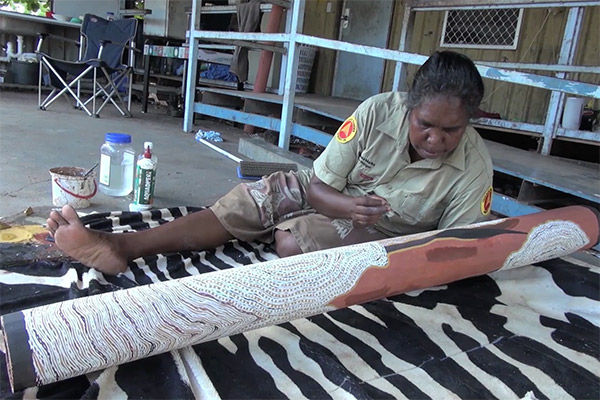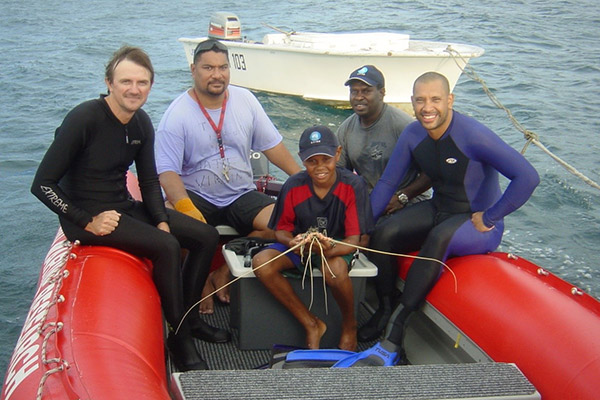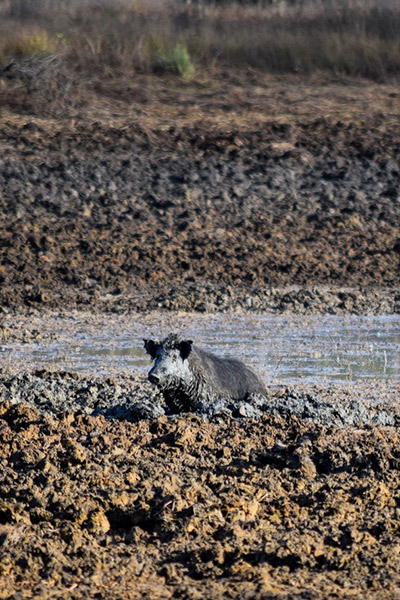The lands of northern Australia are increasingly capturing the attention of those in the south looking to expand agriculture or find other development opportunities.
But only five per cent of Australians live in the north. And this has always been Indigenous country.
CSIRO researchers are building on 70 years of work in the north to develop research partnerships with Indigenous communities that support diversified, sustainable livelihoods on country.
“The Indigenous people we work with want to be seen as valuable co-investors rather than barriers to development,” says CSIRO researcher Dr Marcus Barber.
“They are looking for options for economic diversification that meet short term pressing economic needs and long term intergenerational responsibilities.”
CSIRO’s partnerships with Indigenous communities include: projects that show the full benefits of existing investments on Indigenous land; projects that improve knowledge of the unique natural and cultural asset base; and projects that investigate innovative new livelihood options.
Existing investments: Arnhem Land rangers deliver more than just environment benefits
“Australia is a very important country for both of us – white fellow and black fellow. How great Australia is: Stories in the sea, stories in the land and stories in the sky, and stories whenever the sun rises. Share, look after the country.”
These are the words of Baniyala Community Leader, Djambawa Marawill AM, from Blue Mud Bay in northeast Arnhem Land. His words conclude a film developed jointly with CSIRO, ‘Let’s care for this Country'.

The film highlights CSIRO’s investigation into the value of the Yirralka Indigenous Ranger program to the environment, community and visitors to the region.
Film narrator, Gurrundul Marawili I, says: “We are saltwater people. Our rangers patrol the sea and land. We watch out for fishing nets and turtle nests. We also check the coastline for rubbish.”
The primary aim of the ranger program is environmental protection, but the CSIRO study found a whole range of other benefits from the program, including social, cultural and economic benefits.
The rangers partner with small businesses such as fishermen, local tourist operators and soap producers. They also help protect cultural sites, for example by diverting a road away from a women’s sacred site in the area.
“This is an example of research in which Indigenous people partner with us to more clearly show the value on such Indigenous activities and programs,” says film co-director, Marcus Barber.
Understanding assets: Monitoring fish harvests opens up fisheries to locals in Torres Strait
Fishing of Spanish mackerel and reef line fishing of other finfish species such as coral trout is economically important for Torres Strait Islanders.
Some of the reef line fishing is licensed out to commercial operators who tend not to be from the Islands. But, there are opportunities for increased fish trading by locals once Indigenous catch is properly assessed.
“We believe many of the finfish populations here are underused,” says CSIRO marine ecologist, Mibu Fischer. “But we need to work out exactly which fish stocks are being taken by local communities and in what amounts.”

To solve this puzzle, Mibu is a part of a team developing a program where local community members will survey each household to determine what fish they are catching.
“CSIRO will train people in the community to monitor fish take and each household will get a little pack of information sheets,” says Mibu.
New livelihood options: Fencing out feral pigs protects wetlands and brings jobs
CSIRO also works with Indigenous and industry partners on new livelihood options. For example, projects in north Queensland are investigating fencing feral pigs out of wetlands and marine turtle nesting beaches.
CSIRO ecologist Justin Perry partners with Kalan Enterprises, Aak Puul Ngantam (APN), Balkanu, Cape York Partnerships and Resource Recovery Australia.,
”Current control methods for feral pigs, such as aerial shooting, rely on having enough funding every year to keep populations at bay,” says Justin.
“If the funding is removed or there isn’t enough money to do the job properly, pigs very quickly return to their pre-control levels.”

Investing in fencing creates jobs for locals, provides long term protection for environmental values and can potentially lead to new industries.
“If you can funnel massive volumes of pigs into a small area, there is an opportunity to economically harvest the animals and develop high value protein based products like fertiliser,” says Justin.
Indigenous traditional owner Dion Creek, Director of Kalan Enterprises, has overseen the wetland fencing program near Coen which is already yielding fantastic results.
“Our new approach is great for our country, increases indigenous employment and is showing great promise as a business opportunity,” says Dion.
Developing valuable products is only the first step. To convert ideas and research into real successful businesses requires an entirely different skill set and support network.
“Combining local aspirations, environmental outcomes and business opportunities is a challenging business and isn’t possible without local leadership and strong partnerships across different sectors,” says Justin.
Partnerships for long term sustainability
CSIRO’s northern Australian projects depend very much on partnerships with Indigenous communities for their success.
“Our partnerships recognise that Indigenous people have always been here, but are also responding to new conditions and new challenges,” says Marcus Barber.
“Indigenous people live out of the understanding that in 300 plus years they will still be here on their land, where they have been for a millennia. Their focus is on economic diversification that is ecologically sustainable for the long term.”
